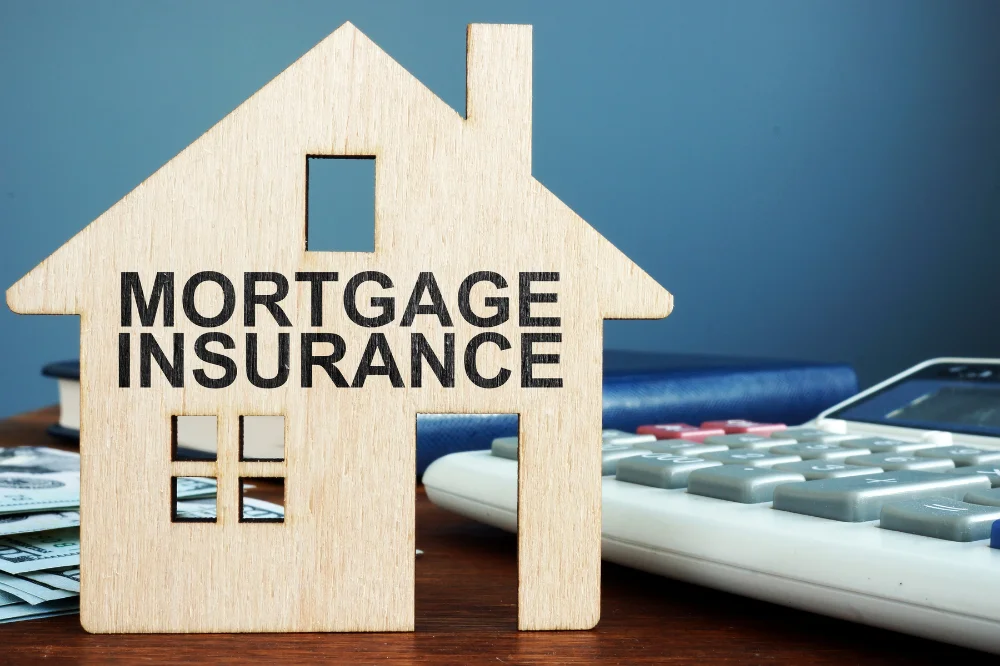In Canada, mortgage insurance protects the lender in the event that a borrower defaults on their mortgage. This coverage, however, is not for the borrower’s benefit—it’s designed to reduce the lender’s risk, especially when the down payment is less than 20%. Mortgage insurance is mandatory for high-ratio mortgages, which are loans where the borrower puts down less than 20% of the purchase price.
Types of Mortgage Insurance in Canada
1. Default Mortgage Insurance:
- Required for borrowers with a down payment of less than 20%.
- Protects lenders in case of borrower default.
- Offered by providers like Canada Mortgage and Housing Corporation (CMHC), Genworth Canada, and Canada Guaranty.
2. Mortgage Life Insurance:
- Provides coverage that pays off the mortgage balance in the event of the borrower’s death.
- Can be purchased through banks, credit unions, or independent insurance providers.
3. Mortgage Disability Insurance:
- Covers mortgage payments if the borrower becomes disabled and cannot work.
- Helps ensure payments are made during the period of disability.
4. Critical Illness Insurance:
- Provides a lump sum payment if the borrower is diagnosed with a covered critical illness.
- Can be used to pay off the mortgage or cover other expenses.
5. Property Insurance:
- Not a type of mortgage insurance per se but is typically required by lenders.
- Protects the property against damage from events like fire, theft, or natural disasters.
Each type of mortgage insurance serves different needs and offers varying levels of protection for both borrowers and lenders.
Why Do Lenders Require Mortgage Insurance in Canada?
- Protecting the Lender: Mortgage insurance in Canada primarily protects the lender by ensuring they don’t face financial losses if the borrower defaults. This is especially important when buyers make a smaller down payment, as it represents a higher risk for lenders.
- When Is Mortgage Insurance Required in Canada? Mortgage insurance is mandatory for high-ratio mortgages in Canada, where the down payment is less than 20%. If you’re putting down 20% or more, this insurance isn’t required. However, if your down payment falls below that threshold, the lender will require it as part of the mortgage approval process.
Canada Mortgage and Housing Corporation (CMHC) Insurance
Canada Mortgage and Housing Corporation (CMHC) Insurance plays a crucial role in the Canadian housing market, especially for first-time homebuyers. This insurance is designed to protect lenders from the risk of borrower default, making it easier for individuals with lower down payments to secure a mortgage. Specifically, CMHC insurance is mandatory for homebuyers who are putting down less than 20% of the home’s purchase price. By providing this coverage, CMHC enables more Canadians to access homeownership, thereby fostering a more inclusive housing market.
- How CMHC Insurance Works
CMHC Insurance operates by providing a safety net for lenders in case a borrower defaults on their mortgage payments. When a borrower opts for a mortgage with a down payment under 20%, lenders require CMHC insurance to mitigate their risk. In the event of default, CMHC compensates the lender for a portion of the outstanding mortgage balance, allowing them to recover their losses. This system encourages lenders to offer more favorable mortgage terms, including lower interest rates, to borrowers who may not have substantial savings for a down payment.
- Costs Associated with CMHC Insurance
While CMHC insurance facilitates access to home loans, it does come with associated costs that borrowers need to consider.
- CMHC Premiums
The premiums for CMHC insurance are calculated based on the total loan amount and the size of the down payment. Typically, these premiums range from 2.80% to 4.00% of the mortgage amount, with the exact percentage determined by the amount of the down payment. Generally, a lower down payment results in a higher premium, reflecting the increased risk to the lender. For example, a buyer with a 5% down payment will incur a higher premium compared to someone putting down 15%.
Ways to Pay for CMHC Insurance
Borrowers have several options for paying the CMHC insurance premium, allowing them to choose the method that best fits their financial situation:
- Upfront Payment: Borrowers can choose to pay the premium in full at the time of mortgage closing. This option is often preferred by those who want to avoid financing additional costs.
- Financed Premium: Alternatively, borrowers can opt to add the CMHC premium to their mortgage amount. This method spreads the cost of the premium over the life of the loan, making monthly payments more manageable.
- Monthly Payments: Some lenders may also offer the option to pay the CMHC premium monthly, allowing borrowers to include it in their regular mortgage payments. This can ease the initial financial burden and help with budgeting.
By understanding how CMHC insurance works and the costs involved, homebuyers can make informed decisions that align with their financial goals while navigating the complexities of securing a mortgage in Canada.
Other Providers of Mortgage Insurance in Canada
In addition to the Canada Mortgage and Housing Corporation (CMHC), several other organizations offer mortgage insurance in Canada, allowing homebuyers to secure financing with lower down payments. The primary private mortgage insurers are Genworth Canada, Sagen, and Canada Guaranty.
1. Genworth Canada: Genworth Canada is a leading private mortgage insurer that provides coverage for borrowers with down payments as low as 5%. They offer products like the Purchase Plus Improvements program, which allows buyers to finance home purchases and renovations in one mortgage.
2. Sagen: Sagen, formerly known as Genworth Canada, is another prominent provider in the market. They offer a variety of mortgage insurance products designed for first-time homebuyers and self-employed individuals, making homeownership accessible with down payments as low as 5%.
3. Canada Guaranty: Canada Guaranty also offers mortgage insurance to buyers with down payments under 20%. Their Homebuyer Protection Plan allows flexibility in refinancing without additional premiums, catering to first-time buyers and those looking to secure affordable financing.
Comparison of Providers
When choosing mortgage insurance, it’s important for borrowers to compare the offerings from CMHC, Genworth Canada, Sagen, and Canada Guaranty. Each provider has different premiums, coverage options, and eligibility criteria, which can significantly influence overall costs and financing options. Understanding these providers enables prospective homeowners to make informed decisions that align with their financial goals.
How to Avoid Mortgage Insurance in Canada
- Larger Down Payment
The most straightforward way to avoid paying mortgage insurance in Canada is to make a down payment of at least 20%. This eliminates the need for high-ratio mortgage insurance, saving you thousands over the life of the loan.
- Avoiding High-Ratio Mortgages
If possible, consider waiting until you’ve saved enough for a 20% down payment. This can take time but can help you avoid paying insurance premiums altogether. Alternatively, you could look for lower-priced homes to reduce your mortgage amount and meet the 20% requirement.
The Benefits of Mortgage Insurance in Canada
- Enabling Home Ownership
Mortgage insurance makes homeownership more accessible to Canadians who might not have enough for a large down payment. Without this insurance, many people wouldn’t qualify for a mortgage, especially in today’s competitive housing markets.
- Lower Down Payment Options
For homebuyers who don’t have the luxury of a 20% down payment, mortgage insurance allows them to enter the housing market sooner. This is especially beneficial in Canada, where real estate prices can be high, making it difficult to save for a large down payment.
The Downsides
- Additional Costs: The main downside to mortgage insurance is the added cost. CMHC premiums, while spread out over the life of the loan, can add a significant amount to your mortgage payments.
- No Direct Benefit to Borrower; Mortgage insurance protects the lender, not the borrower. It’s an extra cost with no direct financial benefit to you, other than enabling you to secure a mortgage with a lower down payment.
How Long Do You Have to Pay Mortgage Insurance?
- Paying Off Mortgage Insurance
In Canada, once you’ve secured CMHC mortgage insurance, it remains in place for the life of the mortgage or until the loan is paid off. This means you’ll continue to pay for the insurance as long as the mortgage exists.
- Can You Cancel Mortgage Insurance in Canada?
Unlike private mortgage insurance in the U.S., which can be canceled once you’ve built enough equity, mortgage insurance in Canada cannot be canceled. Once it’s in place, you’re required to pay it until the mortgage is fully paid off.
Is Mortgage Insurance Worth It in Canada?
Deciding whether mortgage insurance is worth it in Canada involves weighing the advantages and disadvantages.
- Evaluating the Pros and Cons
Pros: Mortgage insurance enables buyers to purchase homes with lower down payments, making homeownership more accessible. It protects lenders, which can lead to better mortgage terms, including lower interest rates.
Cons: The additional costs can significantly impact a borrower’s budget, and the insurance primarily benefits lenders rather than borrowers. Additionally, if financial difficulties arise, borrowers remain responsible for the mortgage despite having insurance.
- Financial Situations in the Canadian Market
The value of mortgage insurance varies based on individual financial situations. For first-time homebuyers or those with limited savings, mortgage insurance may be essential for securing a mortgage. However, for those with larger down payments or stable financial circumstances, the added costs might outweigh the benefits.
Ultimately, evaluating personal financial situations and long-term goals is crucial for determining if mortgage insurance is worth it in Canada. Consider, consulting with a mortgage specialist on a One-on-One session to make better financial decisions.
Alternatives to Mortgage Insurance
- Traditional 20% Down Payment
One of the best alternatives to avoid mortgage insurance is to make a 20% down payment. This ensures that you’re not required to pay any additional insurance premiums, though it may require more time to save up.
- Lender-Paid Insurance
Some lenders may offer mortgage products where they cover the cost of insurance, but these typically come with higher interest rates. It’s important to carefully weigh the trade-offs before opting for this route.
Conclusion
Mortgage insurance plays a critical role in helping Canadians achieve homeownership, especially in markets where property prices are high. While it adds to your mortgage costs, it can be the key to getting into your dream home sooner. Before committing, it’s essential to weigh the pros and cons and consider alternatives like saving for a larger down payment.
FAQs
- What is the purpose of CMHC insurance in Canada?
CMHC insurance protects lenders by covering potential losses if the borrower defaults on their mortgage. - Can mortgage insurance be canceled in Canada?
No, once mortgage insurance is in place in Canada, it cannot be canceled until the loan is paid off. - How much does mortgage insurance cost in Canada?
The cost varies but typically ranges from 2.8% to 4% of the total loan amount, depending on the size of your down payment. - What happens if I don’t have mortgage insurance?
If your down payment is less than 20% and you don’t have mortgage insurance, you won’t be able to qualify for a high-ratio mortgage. - Can you avoid mortgage insurance in Canada?
Yes, by making a down payment of 20% or more, you can avoid the need for mortgage insurance.





